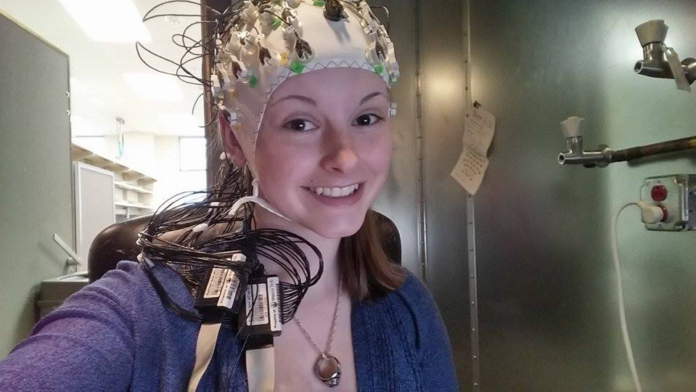
At the Roanoke Valley Governor’s School for Science and Technology, students are charged each year with carrying out a science fair project. This year, RVGS/Craig County High School senior Kacey Price elected to work in the biotechnology field on a project titled Prognostic and Diagnostic Measure for Circuit Disruption in Alzheimer’s Disease.
“I have been interested in Alzheimer’s disease since elementary school,” said Price. “A friend’s father had it, and it was a devastating disease for the entire family. He was a brilliant man – an author – and then one day he couldn’t think clearly enough to write. It was heartbreaking. Once I researched the disease and found out how prevalent and ravaging it is, I decided to try and help.”
Statistics on Alzheimer’s disease are grim. Someone in the U.S. develops the disease every 67 seconds, and more than five million Americans are currently living with it. Alzheimer’s kills more people than breast cancer and prostate cancer combined and is the most expensive condition in the country. There is no known prevention, cure, or method to even slow its progression. Through a Governor’s School partnership with the Virginia Tech Carilion School of Medicine and Research Institute, Price is working with mentor Dr. Rosalyn Moran to try to improve those statistics.
“Gamma-aminobutyric acid (GABA) functions as a transmitter in the brain’s neural pathways,” said Price, “and it can basically turn on or off a brain’s action potential, which is the electric pulse that sends messages from one cell to another. The correct balance of neurotransmitters is critical for the brain to function normally, and Alzheimer’s disease causes GABA deficiencies, which decreases memory performance. For my science project, I am creating a model that represents the circuitry of an Alzheimer’s brain, and I am testing various drugs on the model to find which is the most effective in safely increasing GABA and improving memory performance in the Alzheimer’s brain.”
Like most projects at the Gov. School, this one is complicated. To create her model, Price used MATLAB, a fourth-generation computer programming language, to set up a series of ordinary differential equations that describe the state of neuron populations based on time. She source-localized preprocessed EEG data, developed a time series from the results, and then applied it to her model to simulate an Alzheimer’s-diseased brain. Price compared brain waves from a healthy brain to those from her model and is in the process of painstakingly testing various known GABA agonists to determine the safest and most effective drug to improve memory.
Already Price has made an exciting discovery. “I was stunned to find that my model could be a breakthrough in the early diagnosis and prognosis of Alzheimer’s disease. I set out to improve memory, but how awesome would it be if I could be part of the cure?!”
Kacey placed first in the Computer Science/Mathematics category and will move on to regional competition next.
To learn more about the Roanoke Valley Governor’s School, a half-day regional public STEM school for motivated students in grades nine through twelve, please visit the school’s website at www.rvgs.k12.va.us or contact the school’s director, Dr. John Kowalski, or the school’s guidance counselor, Kathy Sebolt, at 540.853.2116.


